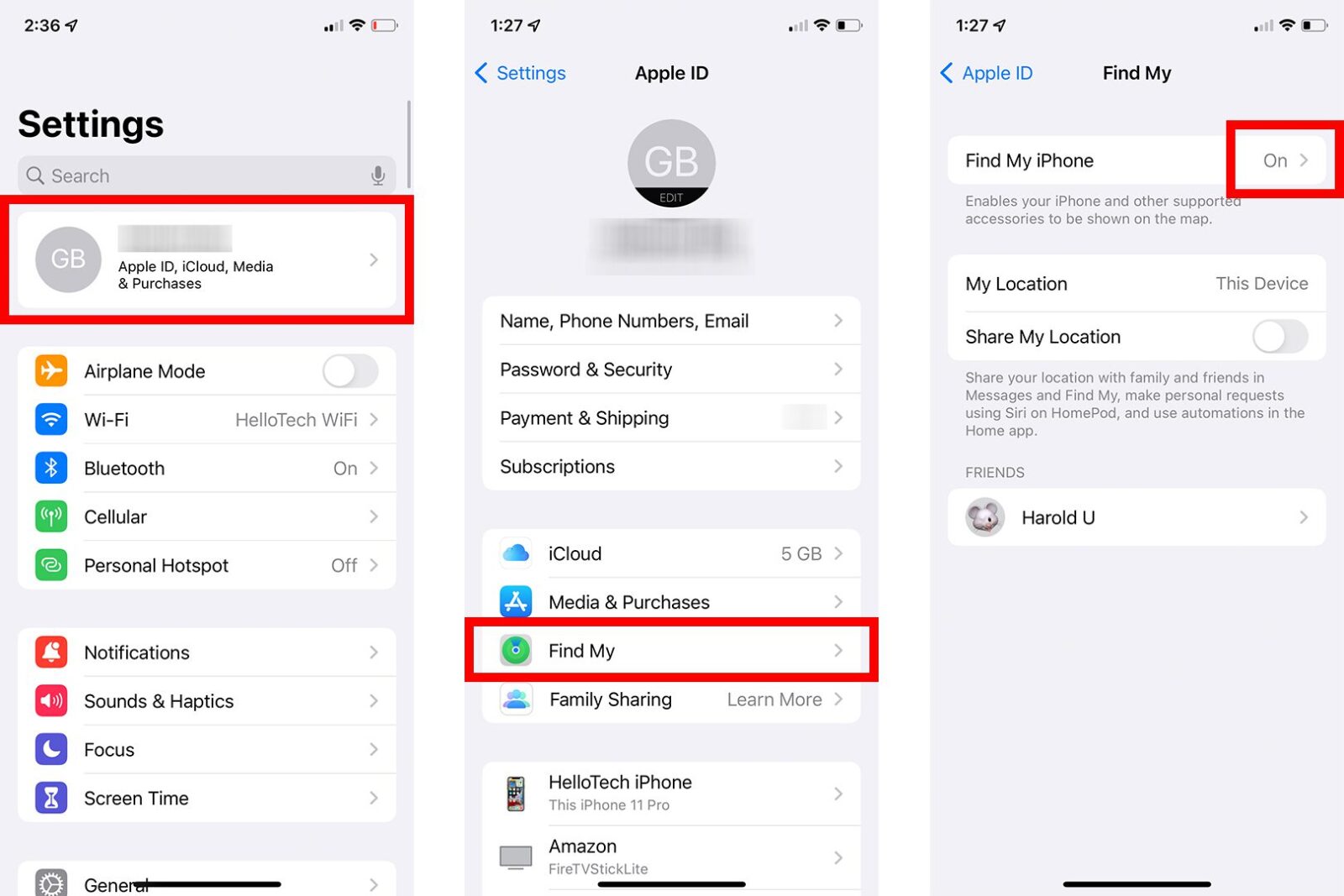AirPods were designed to be sleek and small, which means they are very easy to lose. Thankfully, there are several ways to find your AirPods with your iPhone or from a web browser. In fact, Apple recently released a new firmware version for AirPods Pro, AirPods Max, and select Beats headphones that makes them even easier to locate with the ‘Find My’ app. Here’s everything you need to know about how to find your missing AirPods and how to report them missing, so other iPhone users can help you find them.
To find your AirPods with your iPhone, you must first enable the Find My feature. To check if the app is enabled, open Settings and tap your name. Then tap Find My and check that it says On. If it says Off, tap the slider next to Find My iPhone to turn it green.
Note: This feature should be enabled by default if you are running iOS 13 or later. If your iPhone isn’t running iOS 13 or later, you can’t use this feature. To find out how to update your iPhone and what to do when it won’t update, check out our step-by-step guide here.


Then next time you pair your AirPods to your iPhone, they will automatically be added to the Find My app. If Find My was disabled before your AirPods went missing, you will not be able to use the app to find them. Find My is the only app you can use to locate your missing AirPods.
To find your AirPods, open the Find My app on your iPhone and select the Devices tab. Then swipe up and select your AirPods to see their last known location on a map. From here, you can also make them play a sound, get directions, use the new Find feature, and more.
Once you tap Find, your iPhone will try to connect to your AirPods. For best results, make sure to uncover your camera and walk around until they connect. Then you will see a basic description of how far your AirPods are. Continue moving closer until your screen says Here.
Then see if the code next to Firmware Version is 4A400. If not, there is no way to force your AirPods to update, but you can try to place them in their charging case and plug it into a wall outlet for several hours.
If you still can’t find your AirPods, Apple also added a new way to mark them as lost. This will lock your AirPods and allow other iPhone users to notify you when they find your AirPods. Here’s how:
To enable Lost Mode on your AirPods, open the Find My app on your iPhone and tap Devices. Then select your AirPods, scroll up, and tap Activate under Mark As Lost. Next, tap Continue and enter your phone number. Finally, enable Notify When Found and tap Activate.
When you find your AirPods, remember to turn off Lost Mode in the Find My app. To do this, go to Devices, select your AirPods, and tap Activated under Mark As Lost. Then tap Turn Off Lost Mode and select Turn Off from the pop-up window.
If you don’t have an iPhone, you can also use a computer, Android smartphone, or any other device with a web browser. Here’s how:
To find your AirPods using a web browser, go to iCloud.com/find and sign in with your Apple ID and password. Then select All Devices and choose your AirPods from the pop-up list. You can then locate them on a map or tap Play Sound to find them by ear.
You can then use Find My on iCloud to find one AirPod at a time by clicking the Mute Left and Mute Right buttons.
If you can’t find your AirPod case, Apple recommends you get a replacement. Check out our step-by-step guide on how to contact Apple Support to find out more.
HelloTech editors choose the products and services we write about. When you buy through our links, we may earn a commission.
Learn how to take a screenshot on an iPhone X, and any other model of… Read More
Learn how to forget a WiFi network on your Mac, so your computer won’t automatically… Read More
Learn how to set up a guest WiFi network for the next time you have… Read More
Whether you want to record a video you found online or you need to show… Read More
With a Windows 10 PC, you can easily fill your entire screen with two different… Read More
Learn how to connect your smart plug to Alexa. Also, what a smart plug is… Read More
This website uses cookies.